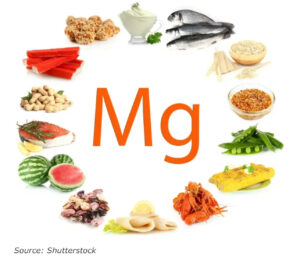Magnesium is a crucial mineral for our well-being. It impacts numerous functions of our body in addition to our rest and muscle recovery. Despite its significance, thousands of individuals in the United States are lacking. This is all the information you require concerning Magnesium, Magnesium insufficiency, and how to maintain your levels properly.
Magnesium and Magnesium Insufficiency

So what exactly is Magnesium, and why is Magnesium insufficiency so damaging to our health? Initially, Magnesium is a mineral, indeed, but it is also an essential electrolyte. It occurs naturally in many foods, and at times, manufacturers fortify food items with it. This mineral/electrolyte plays a crucial role in the operation of our body’s organs and systems.
Actually, it acts as a helper for over 300 enzyme systems that govern a vast array of chemical reactions in our bodies. These include muscle and nerve operation, protein synthesis, blood sugar regulation, power generation, and blood pressure management. It plays a part in the development of DNA and crucial antioxidants, as well as aiding in the transportation of Magnesium and potassium across cell membranes to sustain normal heart rhythms. And this is just scratching the surface.
Discover More: Vitamin D Deficiency and Cognitive Impairment Indications: What You Need to Understand
Where Do We House Magnesium?

We stock most of the Magnesium in our bodies, bones, and soft tissues. There is only a small amount left in the bloodstream. Normal blood Magnesium levels (serum Magnesium) range from 0.75 to 0.95 millimoles per liter. If your levels drop below that 0.75 threshold, you are deemed to have hypocalcemia or Magnesium insufficiency. You can undergo blood examinations for Magnesium levels, but this might not necessarily reflect how much of the mineral you have stored within your cells. For this reason, assessing Magnesium levels can be complex. There are alternative methods, such as saliva and urine tests. Nonetheless, none of the existing methods are considered entirely satisfactory.
For adult men, the recommended daily intake varies from 400mg to 420mg, depending on age. For adult women, this range is from 310mg to 320mg, again depending on age. As for pregnant women, this allocation is between 360 to 400, yet again depending on age. Lactation needs also fluctuate with age, ranging from 310mg to 360mg.
Indications of Magnesium Insufficiency

There are various factors contributing to why someone might become Magnesium deficient. Aside from merely having an inadequate, Magnesium-deficient diet, factors like long-term illness, alcohol misuse, medications, gastrointestinal and renal losses (e.g., diarrhea and surgical procedures), and a plethora of other conditions can influence one’s Magnesium levels. There exist several signs and symptoms of Magnesium insufficiency, all contingent on the degree of deficiency, among other factors.
Symptoms of Magnesium Insufficiency Can Include (2,4):
•Minor tremors
•General fatigue
•Cardiac episodes
•Elevated blood pressure
•Irregular heart rate
•Respiratory conditions
•Bone-related issues
•Mental health disorders
•Muscle spasms and contractions
Regarding deficiency figures, the percentages can vary based on the demographic you are observing. Medics identify Magnesium insufficiency in approximately 2% of the general population. This figure climbs to 10%-20% in hospitalized patients. Roughly 25% of non-residents with diabetes exhibit insufficiency. In intensive care settings, this number increases further to 50%-60%, while individuals with a history of alcohol misuse are shown to range between 30% to 80%. Other studies suggest that 10% to 30% of individuals living in developed countries are lacking Magnesium. Among postmenopausal women, these figures skyrocket. Therefore, while a minority of the general populace is assumed to have a deficiency, individual necessities truly matter.
Nourishment to Elevate Your Magnesium Consumption
Thankfully, as already mentioned, you can locate naturally existing Magnesium in numerous food items. Presented below is a compilation of foods containing notable amounts of Magnesium:
•Roasted or raw sunflower seeds
•Chia seeds
•Roasted almonds
•Spinach
•Cashews (roasted and unsalted)
•Whole grain wheat cereal
•Soy milk
•Black beans
•Edamame
•Groundnuts and Almond butter
•Starchy tubers
•Brown rice
•Cultured milk products
•Porridge
•Fortified cereal grains
•Frijoles
•Apple bananas
•Salmon from the Atlantic
•Whole milk
•Flatfish
•Dried grapes
•Entire wheat loaves
•Avocado
•Chicken fillet
•Lean minced meat
•Broccolini
•Orchard fruits
•Carrots
As demonstrated, there is a wide array of options for Magnesium-rich nourishments. Naturally, another alternative is to turn to Magnesium supplements. These supplements are accessible in various formulations, encompassing Magnesium citrate, oxide, chloride, and glycinate (or bisglycinate). They are obtainable in diverse forms, such as powders, liquids, and tablets. As always, seek advice from your physician before initiating any new supplementation, especially if you are already consuming medications or a variety of other supplements.




